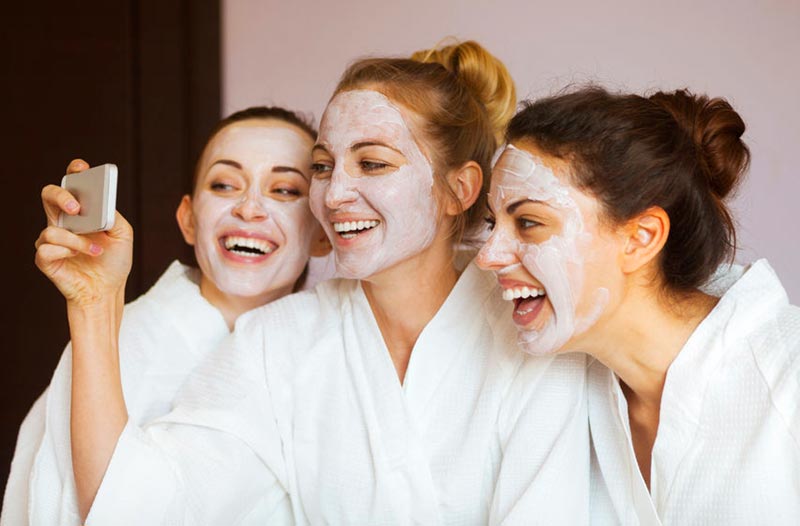
Do you want to increase spa profits? Industry experts list the ways you’re leaving money on the table.
Is your spa leaving money on the table and missing out on revenue opportunities? Probably. Nobody’s perfect, and it’s unlikely that anyone out there is capturing every possible available dollar. You can, however, capture more of them and increase spa profits.
Heading into 2020, it would be great if we could all increase profits. So, we put the question to some of our favourite experts of how and where spas are missing out on revenue opportunities and leaving money on the table.
Here’s what they had to say. Seven ways spas miss out on revenue opportunities:
Complex menu structures
We’ve been told before that a complex menu is a bad idea. It’s also costly, according to Kathryn Moore, of of Spa Connectors. . “A well designed and structured spa service menu can provide the essential flexibility to book services that maximise the spa’s bottom-line,” she says. “For each treatment, understanding the range of labour costs and profit margin is critical.”
Rewarding underperforming team members
It’s crucial to manage your employee performance, and reward those who do well. This will encourage others to do better. Moore says, “It is essential to develop a compensation strategy that rewards those who produce the best results. It must be a win-win relationship to be sustainable.
“Designing a plan with fixed and variable compensation elements as well as team-based bonuses creates dynamic teamwork that ensures everyone is aligned in purpose and execution.”
Too many discounts with no clear goal
We also put this question to Emma Darby, COO of Resense, in our spotlight interview this month. She said, “It’s common to offer something like 25% off a massage, but this is not always an effective way of doing things. Giving 25% off is just taking 25% off your top if you’re not using that promotion to fill your off-peak times, for example. It’s more effective to create something compelling and solve a problem than it is to just offer 25% off.”
Moore concurs, and suggests another strategy: upgrades. “What’s more affective than discounts are upgrades to more popular services and making it easy for the guest to upgrade “in-treatment.” The therapists also become more engaged in the guest’s total experience and are more apt to recommend a product regimen to compliment the service.”
Poor design of retail services
Spas often struggle with retail, and it’s often treated as an afterthought. “There is an opportunity to improve retail offers with an attractive and exclusive selection of items, suitable to everyone’s needs,” says Moore. “This helps maintain a consistent retail-to-service ratio.” This, she notes, can dramatically improve bottom line. “The increase in
retail sales has a greater impact on profit than an equivalent increase in service revenue.”
Not monitoring your spa’s Key Performance Indicators
Moore states that not monitoring KPIs can result to losing track of goals and objectives, and negatively impact revenue. “Closely monitoring the spa’s KPIs, and making timely business decisions, can impact performance proactively versus retrospectively at the end of the week or month,” she says. “For example, knowing that the spa has dropped below daily threshold for staff utilisation gives management the opportunity to make informed decisions intra-day, such as shortening shifts, that result in immediate bottom line improvements.”
Not leveraging existing customers
Trent Munday, of Mandara Spa, whose focus is hotel spas, says “The single biggest Immediate missed opportunity that I see in most hotel spas today is the potential to leverage your current customers. Every satisfied customer is an evangelist for your business. They are the best people to promote your spa, and they’re probably willing to do so. Your job is to give them simple ways to do that.
“It could be something as subtle as having an iconic, Insta-worthy photo opportunity in or around your spa. This will encourage them to snap a pic and post it on their social networks. Forget about celebrities. This is what real influencer marketing is all about.”
Other ideas from Munday include offering future discounts to your existing clients who bring you new ones and even recording short video testimonials from your biggest fans “that you then use as part of your own social media campaign.
“The possibilities here are many and varied,” he says. “The key is in rewarding your happy clients’ natural behaviours of spreading the word, rather than prompting unnatural promotion.
Failing to identify commonalities of non-customers
Munday says, “Identifying commonalities of non-customers represents a massive long-term opportunity for hotel spas. It’s a concept well explored in the Blue Ocean Strategy.” (The Blue Ocean Strategy is “the simultaneous pursuit of differentiation and low cost [ways] to open up a new market space and create new demand. It is about creating and capturing uncontested market space, thereby making the competition irrelevant.”)
“The idea is simple enough. If people who are not your customers share common pain points, offering them a solution that addresses those needs will make them your new customers. We already know that, in most hotels, the vast majority of the hotel guests do not use the spa. If we can focus on these non-customers, and identify a commonality in their unmet needs, we can tap in to a significant new revenue opportunity. It will take some time, but the opportunity is very real.”
 We’ve released our spa and wellness trends to watch for 2020. Sign up for Spa Executive’s newsletter and download the free report! CLICK HERE >>
We’ve released our spa and wellness trends to watch for 2020. Sign up for Spa Executive’s newsletter and download the free report! CLICK HERE >>
Spa Executive magazine is published by Book4Time, the world’s most innovative spa, salon, wellness, and activity management software. Learn more at Book4Time.com.



